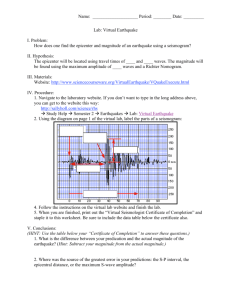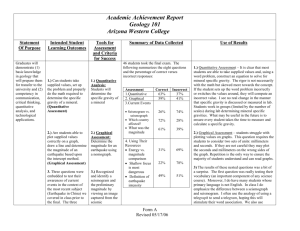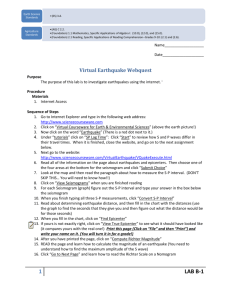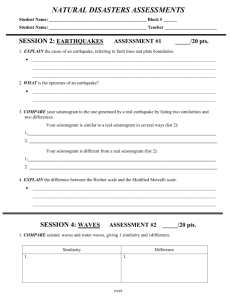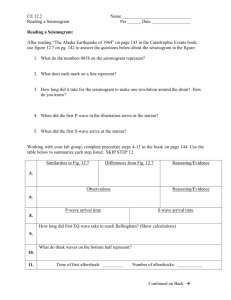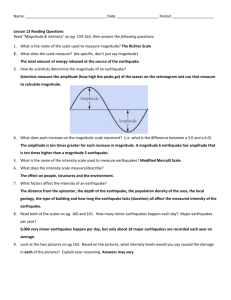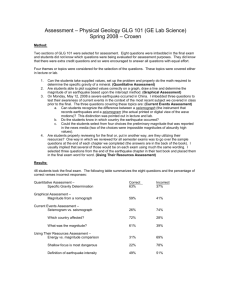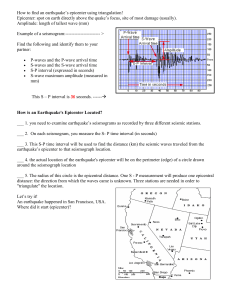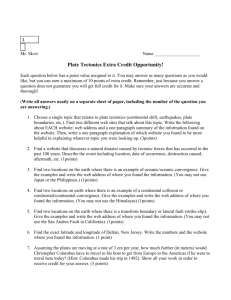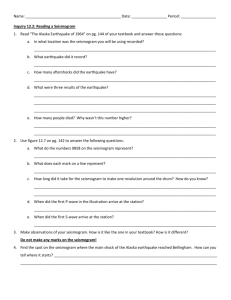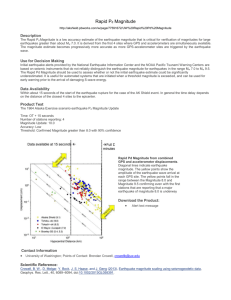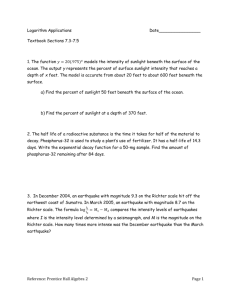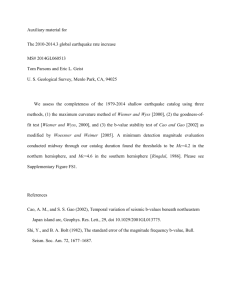Waves - IRIS
advertisement
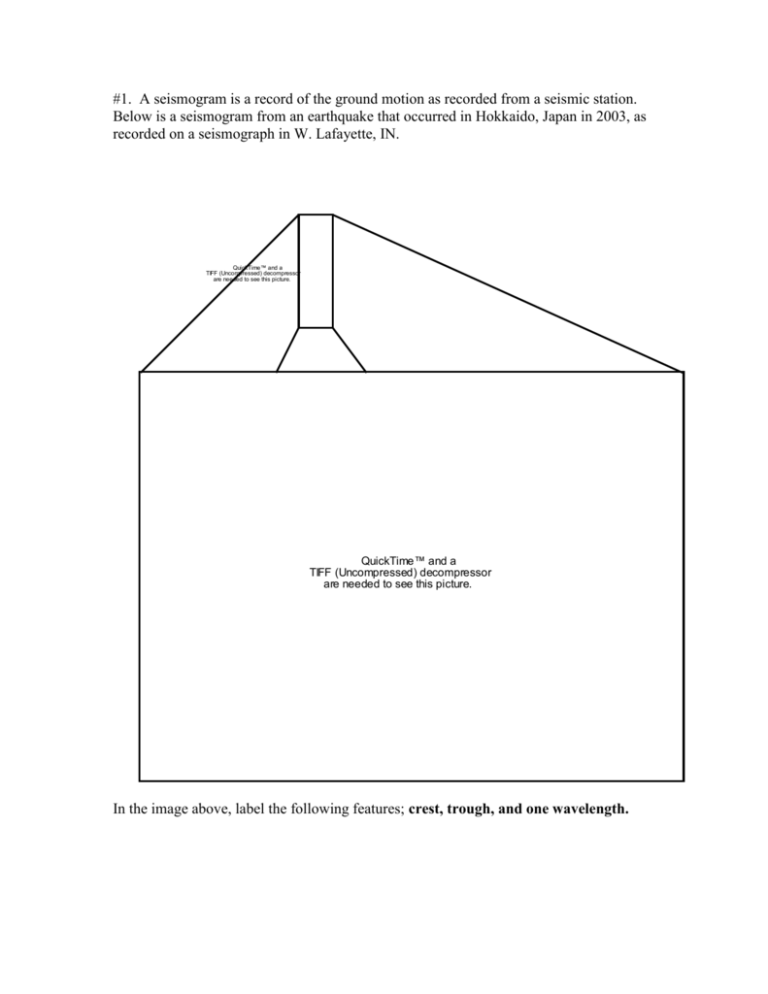
#1. A seismogram is a record of the ground motion as recorded from a seismic station. Below is a seismogram from an earthquake that occurred in Hokkaido, Japan in 2003, as recorded on a seismograph in W. Lafayette, IN. QuickTime™ and a TIFF (Uncompressed) decompressor are needed to see this picture. QuickTime™ and a TIFF (Uncompressed) decompressor are needed to see this picture. In the image above, label the following features; crest, trough, and one wavelength. #2 Using your knowledge of waves and some additional information, provided below, we can calculate the magnitude for this earthquake. The equation to calculate the Surface Wave Magnitude is: MS = log10(A/T) + 1.66*log10(D) + 3.3 Where D = distance from the epicenter to the station measured in degrees, in this case Lafayette, IN is 86.07 degrees from Hokkaido, Japan T = period in seconds A = the displacement amplitude in microns or a/Disamp a = amplitude in counts Disamp = the displacement amplification of the recording instrument, in this case 0.63, What is the magnitude of this event?



